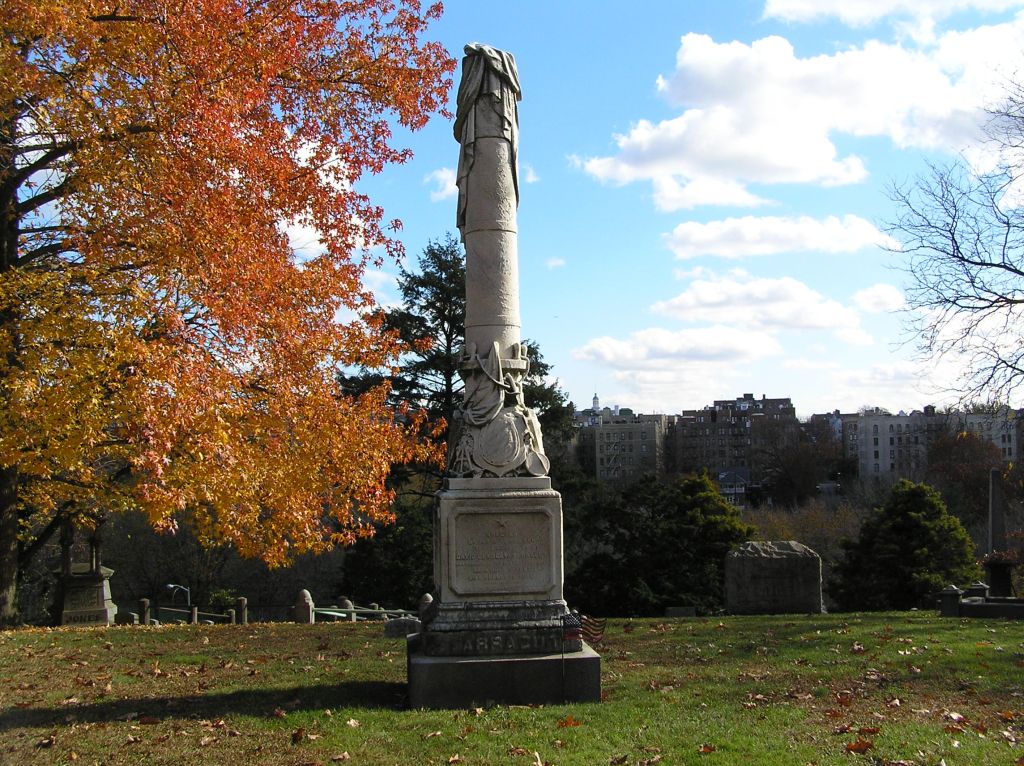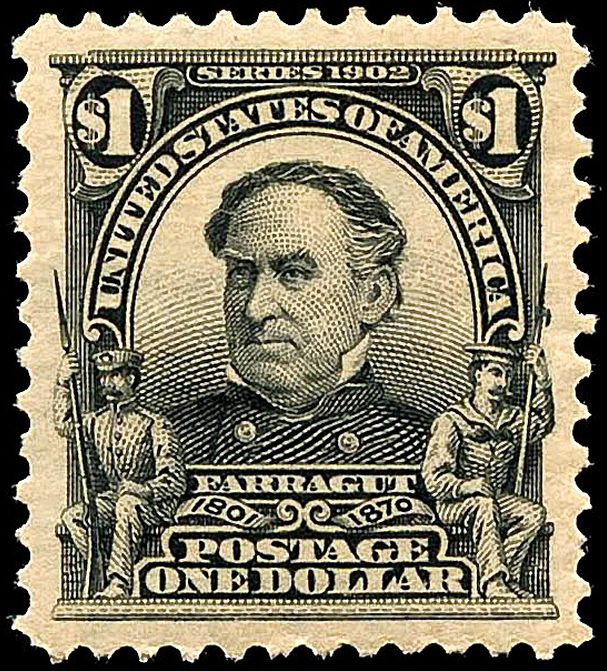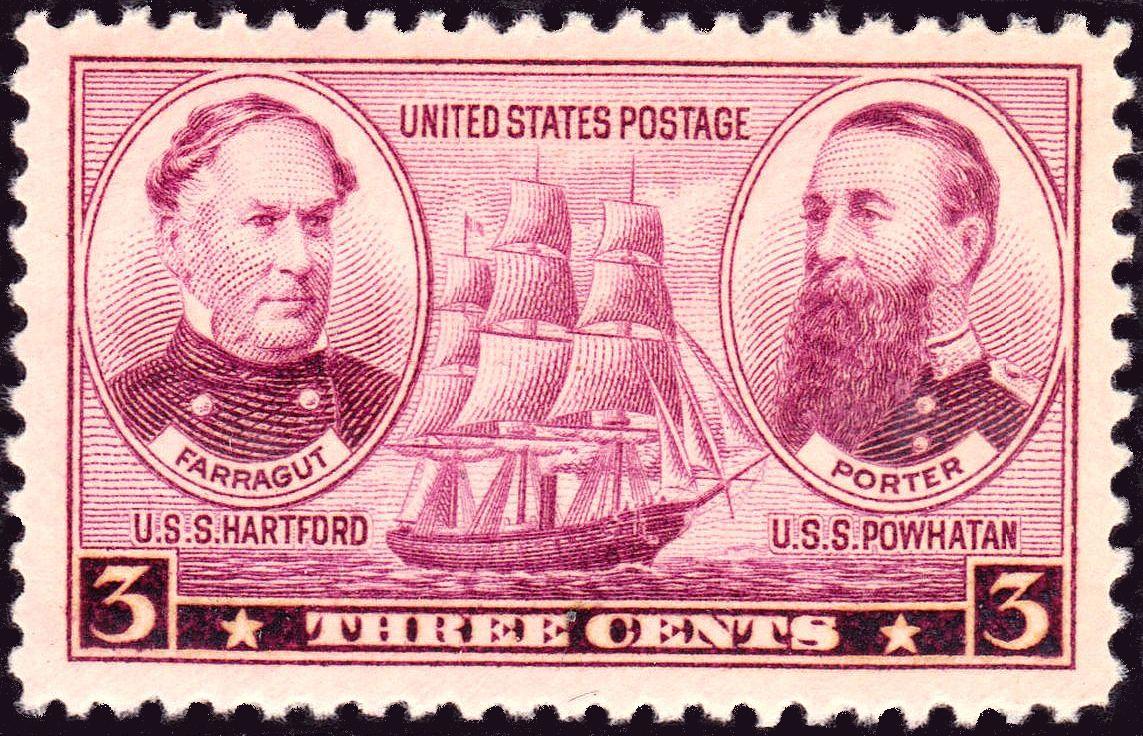1. Early Life and Family Background
David Glasgow Farragut's formative years were shaped by a diverse family heritage and an early immersion in the naval world.
1.1. Birth and Childhood
James Glasgow Farragut was born on July 5, 1801, at Lowe's Ferry on the Tennessee River (then known as the Holston River) in Tennessee, a few miles southeast of Campbell's Station, near Knoxville, Tennessee. His father, George Farragut (born Jordi Farragut Mesquida, 1755-1817), was a Spanish merchant captain from the Balearic Islands of Menorca in the Mediterranean Sea, who had immigrated to North America in 1776 and served as a naval officer in the American Revolutionary War, first with the South Carolina Navy and then the Continental Navy. His mother, Elizabeth Shine (1765-1808), was of Scotch-Irish American descent from North Carolina. After his Revolutionary War service, George and Elizabeth moved west to Tennessee, where George operated Lowe's Ferry and served as a cavalry officer in the Tennessee militia.
In 1805, George Farragut accepted a position at the U.S. port of New Orleans. He traveled there first, and his family followed in a 1.70 K mile journey by flatboat. This voyage was young James's first experience at sea. The family was still living in New Orleans when Elizabeth Farragut tragically died of yellow fever in 1808. George Farragut then made arrangements to place his young children with friends and family who could better care for them.
3. Personal Life
David Glasgow Farragut's personal life included two marriages and a family, as well as affiliations such as Freemasonry.
After his appointment as acting lieutenant commanding USS Ferret and his initial cruise, Farragut married Susan Caroline Marchant on September 2, 1824. After years of poor health, Susan Farragut died on December 27, 1840. Farragut was known for his kind and attentive treatment of his wife during her illness.
Following the death of his first wife, Farragut married Virginia Dorcas Loyall on December 26, 1843. They had one surviving son, Loyall Farragut, born on October 12, 1844. Loyall Farragut graduated from West Point in 1868 and served as a second lieutenant in the U.S. Army before resigning in 1872. He spent most of his subsequent career as an executive with the Central Railroad Company of New Jersey. Loyall was a hereditary member of the Military Society of the War of 1812 and a companion of the Military Order of the Loyal Legion of the United States. He died on October 1, 1916, a date noted on one side of the family monument he and his mother erected in memory of his father in Woodlawn Cemetery.
Farragut also had a brother named William A. C. Farragut, who also served in the Navy but had a less distinguished career. William was warranted as a midshipman on January 16, 1809-a year before David began his career-and was promoted to lieutenant on December 9, 1814. He remained at that rank until he was transferred to the Reserve List on December 15, 1855, and died on December 20, 1859.
Farragut was also a Freemason and a Scottish Rite Freemason.
4. Death

David Glasgow Farragut died from a heart attack at the age of 69 in Portsmouth, New Hampshire, on August 14, 1870, while on vacation. He had served the United States Navy for almost sixty years. His remains are interred at Woodlawn Cemetery in The Bronx, New York City. His gravesite is listed on the National Register of Historic Places, as is Woodlawn Cemetery itself.
5. Legacy and Honors
The enduring impact and recognition of David Glasgow Farragut's life and career are evident in numerous monuments, place names, institutions, ships, and cultural commemorations across the United States.
5.1. Monuments and Place Names
Many places and structures throughout the United States bear Admiral Farragut's name. The area formerly known as Campbell's Station, Tennessee, only a few miles from his birthplace, was renamed the town of Farragut in his honor upon its incorporation in 1982. While Farragut was actually born at Lowe's Ferry on the Holston (now Tennessee) River, Campbell's Station was the nearest settlement at the time.
Farragut Square in Washington, D.C., is named in his honor, featuring a prominent statue of him titled Admiral David G. Farragut (Ream statue), created by Vinnie Ream in 1881. This statue, made from the propeller of his flagship, includes a National Park Service interpretive plaque quoting his famous order. Two Washington Metro stations, Farragut West and Farragut North, also share his name. There is a statue of Admiral Farragut at the South Boston Marine Park adjacent to Castle Island, created by Henry Hudson Kitson in 1881. Another outdoor sculpture of him stands in Madison Square Park in Manhattan, New York City, by Augustus Saint-Gaudens (1881), with a replica in Cornish, New Hampshire (1994). The Farragut section of the Borough of Brooklyn, including Farragut Road, is also named for him, as is a street in The Bronx, New York. In Muskegon, Michigan, a statue by Charles Niehaus from 1900 commemorates him in Hackley Park.
Geographical features also honor him, such as Farragut Bay, Alaska, named by Thomas in 1887. A monument is located off Northshore Drive in Concord, Tennessee, reading "BIRTHPLACE OF ADMIRAL FARRAGUT/BORN JULY 5, 1801... DEDICATED BY ADMIRAL DEWEY, MAY 15, 1900."
5.2. Honored Institutions and Ships
Several institutions and naval vessels bear Farragut's name. In May 2023, the Superintendent's residence at the United States Naval Academy was renamed 'Farragut House', replacing 'Buchanan House', which had honored the Confederate Admiral Buchanan defeated by Farragut at the Battle of Mobile Bay.
Farragut Naval Training Station, located in Northern Idaho on Lake Pend Oreille, was a vital World War II naval training center where over 293,000 sailors received basic training. In 1966, the state of Idaho converted the land into Farragut State Park.
The U.S. Navy has honored Farragut by naming two distinct classes of destroyers after him: the Farragut class of 1934 and the Farragut class of 1958. Other U.S. Navy ships named Farragut include TB-11 (1898), DD-300 (1920), and DDG-99 (2006).
Educational institutions also bear his name. Admiral Farragut Academy, a college preparatory school with naval training, was founded in 1933 in Pine Beach, New Jersey. The current and sole campus opened in St. Petersburg, Florida, in 1945 and was designated a Naval Honor School by Congress in 1946. Today, it serves students from PreK-12th grade, with its Upper School (starting in 8th grade) known for its boarding program and Navy Junior ROTC military structure. The academy also offers specialized academic programs in Aviation, Scuba, Marine Science, Engineering, and Sailing.
Other schools include Farragut Career Academy in Chicago, Illinois, founded in 1894, whose sports teams are also known as "The Admirals." The school proudly displays an oil painting of the admiral, presented by the Farragut Post of the Grand Army of the Republic in 1896. Farragut High School in Farragut, Tennessee, was built in 1904 at what was then Campbell's Station. It is now one of Tennessee's largest schools, with nearly 2,500 students, and its teams are also known as "The Admirals." David Glasgow Farragut High School is a U.S. Department of Defense High School located on the Naval Station in Rota, Spain, with teams also called "The Admirals." Farragut Parkway and Farragut Middle School are found in Hastings-on-Hudson, New York. Other grade schools include the David Farragut School in Philadelphia, a grade school in Mayagüez, Puerto Rico, and a grade school (PS 44) in the Bronx. The David Farragut School is also an elementary school in Boston, Massachusetts.
Farragut, Iowa, a small farming town, greets visitors with a billboard featuring Farragut's famous slogan. Its local school, Farragut Community High School, housed memorabilia from ships bearing the Farragut name until its closure in 2016.
5.3. Cultural Recognition
David Farragut has been honored on U.S. postage stamps multiple times, a distinction shared by few naval officers in American history. The first stamp to feature Farragut was the $1 black issue of 1903. The Navy Issue of 1937 included a 3-cent purple stamp depicting Admirals David Farragut (left) and David Porter, with a warship under sail at the center. The most recent postage issue honoring Farragut was released from Gettysburg, Pennsylvania, on June 29, 1995.

First U.S. Postage stamp to honor Admiral Farragut

Farragut honored along with Porter, his foster brother
Farragut's likeness is also featured on the obverse of the $100 Treasury notes of the Series 1890 and 1891. The 1890 Series note is colloquially known by collectors as a "$100 Watermelon Note" due to the design of the large zeroes on its reverse. He is one of 53 people depicted on United States banknotes.
A stained glass window in the United States Naval Academy Chapel depicts Farragut in the rigging of USS Hartford at Mobile Bay, illustrating his iconic moment. His likeness is also featured on the southern side of the Soldiers' and Sailors' Monument in Portland, Maine. In July 2021, the Tennessee State Capitol Commission and Historical Commission voted to move a bust of Admiral Farragut, along with busts of Nathan Bedford Forrest and Admiral Albert Gleaves, from the Tennessee Capitol to the Tennessee State Museum, with the move officially commencing on July 23, 2021.
Other forms of remembrance include the Farragut Field at the United States Naval Academy, the Farragut House bar-restaurant in South Boston, Massachusetts, a hotel in Menorca at Cala'n Forcat, and the Admiral Farragut condominium on the waterway in Coral Gables, Florida. Farragut Elementary School in Vallejo, California, is located just outside the Mare Island Gate, a testament to his significant role there.
5.4. Appearances in Popular Culture
Farragut's legacy extends into various forms of popular culture, often highlighting his heroic image and famous quote.
- A "Commodore Farragut," clearly based on David Farragut, appears in Jules Verne's 1870 novel Twenty Thousand Leagues Under the Seas.
- In the 1943 film The More the Merrier, Charles Coburn's character views Farragut's famous quote on a statue and adopts it as a personal motto, driving the plot forward.
- Farragut is portrayed by actor Scott Brady in the 1952 feature film Yankee Buccaneer.
- Among his last acting roles, Ronald Reagan played Farragut in the 1965 episode "The Battle of San Francisco Bay" of the syndicated western television series, Death Valley Days, focusing on the 1856 San Francisco Vigilance Committee. June Dayton was cast as Farragut's second wife, Virginia, in the episode.
- Farragut is mentioned in The Wild Wild West episode "The Night of the Kraken," where villains attempt to destroy his ship with a naval mine at the climax, but are foiled by the series' heroes.
- In her 2010 spoken-word debut, Olivia Hedrick released a track titled "How I love thee Mister Farragut."
- In the video game The Elder Scrolls IV: Oblivion, there is a location named Fort Farragut.
- Various spacecraft in Star Trek bear the name USS Farragut as background or secondary character vessels. This includes a starship and an entire starship class mentioned in the Star Trek: Strange New Worlds series as one of James T. Kirk's earliest assignment postings. Other USS Farragut ships include a Nebula-class starship that rescued the crew of the USS Enterprise-D at the end of Star Trek Generations (later mentioned as destroyed in the Star Trek: Deep Space Nine episode "Nor the Battle to the Strong") and an Excelsior-class starship mentioned in the Deep Space Nine episode "Chrysalis". A USS Farragut was also mentioned in the 2009 Star Trek film as the initial assignment posting for then-cadet Nyota Uhura.
- The science fiction Venturer Twelve series features an Admiral Farragut in command of Earth's Space Navy in the far future.
His famous quote, "Damn the torpedoes, full speed ahead," has also left a significant mark on popular culture:
- In season 4, episode 13 of M*A*S*H, entitled "Soldier of the Month," Hawkeye asks, "What famous Civil War hero said, 'Damn the torpedoes! Full steam ahead!'?" Klinger humorously replies, "Tugarraf," which is Farragut spelled backward.
- The album Damn the Torpedoes by Tom Petty and the Heartbreakers is directly named after David Farragut's quote.
- The album MDFMK by MDFMK contains a song entitled "Damn the Torpedoes."
- In the comedy film Galaxy Quest, Tim Allen's character delivers a similar line: "Never give up! Never surrender! Damn the resonance cannons! Full speed ahead!"
6. Historical Assessment
David Glasgow Farragut stands as a pivotal figure in American history, largely because of his exceptional naval leadership during the American Civil War, which contributed significantly to the preservation of national unity. His strategic vision and audacious tactics were crucial in the Union's control of key waterways, effectively severing the Confederacy and thereby upholding democratic values against the forces of secession.
His achievements, particularly the capture of New Orleans and the victory at Mobile Bay, demonstrate his mastery of naval warfare under challenging conditions. Farragut's resolute loyalty to the Union, despite his Southern heritage, exemplifies his commitment to the principles of a unified nation. Historians, such as the Japanese naval historian Yamanashi Katsunoshin, have placed Farragut among the world's greatest naval commanders, alongside figures like Horatio Nelson and Tōgō Heihachirō, recognizing his profound impact on naval strategy and his contributions to the course of history. This perspective highlights Farragut not only as a military genius but also as a symbol of determination and commitment to the nation's integrity. While his aggressive style sometimes led to uncoordinated actions, as seen at Port Hudson, his overall legacy remains one of decisive leadership and unwavering dedication that played a critical role in the Union's ultimate triumph. Farragut's influence on national unity and the development of the U.S. Navy endures as a testament to his historical significance.

